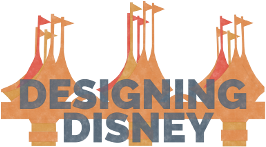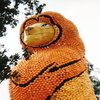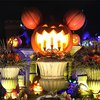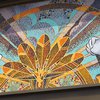Pirate Tales
More than twenty-five years ago, Walt Disney Imagineers and craftspeople on both sides of the Atlantic worked vigorously to bring the legendary “Pirates of the Caribbean” attraction to Europe. Their effort already enabled millions of people to be completely immersed in the exciting world of buccaneers.

On this beautiful late Summer’s evening, we invite you to join us as we listen to the stories of mister Chris Tietz, Show Producer Adventureland, Disneyland Paris. In the article below, he reminisces about the construction of “Pirates of the Caribbean” at Disneyland Paris.


So, sit back and relax, grab a glass of rum and get ready… for some pirate tales!


The show building
The “Pirates of the Caribbean” attraction is known for its signature and very popular thrilling drop(s). Oddly enough it was the actual construction site constrictions in California that dictated the introduction of the two ride drops and upramp for the first “Pirates of the Caribbean” attraction that opened in 1967.



Half of the enormous show building was to be placed outside the berm which meant it had to cross the steam train tracks that circled the Park. The solution was to have the ride flume drop two times at the beginning of the show in order to get low enough to pass under the train tracks above. The upramp is then placed at the end of the show to bring the ride boats back up to where they started before the two drops.


However, the two subsequent Pirate rides that followed came across a high water table that was not an inherent feature of the California site. The Pirate attractions at The Magic Kingdom in Walt Disney World and at Tokyo Disneyland both ran into this problem so they could only incorporate a single smaller drop during the ride. That was disappointing to guests who knew this attraction.


To our surprise when we mapped out the location for the Pirate ride in Disneyland Paris, Adventureland, we also found a high water table to deal with. We absolutely wanted to incorporate the same two thrilling drops as in the original attraction, but digging down would be just too costly. Again, as in California, the construction site would dictate a slight design change in order to get the show we wanted.


The solution was to bring the ride up first in order to gain enough elevation for the two drops to follow. Thus, the upramp is worked into the show to occur first (after passing under the steam train tracks) and then the first drop is introduced to escape the upper level of the “Flooded Fort” plunging down into the middle of the “Bombardment” scene between the pirate galleon and the Caribbean city fort. The second drop is saved for the plunge down into the exciting “Exploding Arsenal” scene. This “Exploding Arsenal” was actually a feature depicted by Walt Disney during his presentation of the ride on his television show back in the 1960‘s as a climax to the show.
This construction photo shows the load/unload area under the queue which is above. The ride boats would be going left to right from the caves onto the belt. The "Blue Lagoon" is on the right.

Here you can see the first drop ramp from the "Flooded Fort" down into the pirate galleon battle.

This photo shows the upramp being installed with the train track tressle overhead.

Here you can see the window openings in the train tunnel that will look into the cave scenes.

Because in Disneyland, we were able to dig down deep, the tall show buildings, half underground, could be hidden with quaint “New Orleans Square” facades. Since at Disneyland Paris our tall show buildings were mostly above ground, we had to find an alternative. We found that the tall battlements of a Caribbean fort could hide them nicely within the theme. And if you look to the right side of the facade you can see that part of this fort is actually the side of the “Peter Pan” show building painted to look like part of the fort.



It is a tradition on construction sites to have a “topping off” ceremony when the last beam is placed atop a structure. Then flags are planted on the highest point of a building. One day several of us climbed to the top of the show building over the “Blue Lagoon” onto the yet unfinished roof and planted a pirate flag. It was still a little damp from a rain and the corrugated metal roof was moving a little under my feet. It was exhilarating, but since I am not fond of heights, I couldn’t wait to get back down on the ground.

Set construction and props
The sets for the “Pirates of the Caribbean” attraction in Paris were mainly constructed in a large facility in the United Kingdom. Caribbean town buildings, forts and whole pirate ships were built and painted in warehouses, disassembled and shipped to the site for reassembly into the show.
This photo shows the pirate galleon under construction in the scene shop in the United Kingdom.
The ship in the foreground will be the broken ship in the “Blue Lagoon” by the restaurant.

Pirate galleon placed in the show building where it will be locked in cannon battle with the fort.

Procurement of the props was far and wide. Many were built from scratch in our Central Shops located backstage in Walt Disney World. Some were made in the United Kingdom and many were found in various stores all over the globe.




Audio Animatronics
The manufacturing of the Audio Animatronic figures for Pirates was all done in the Central Shops backstage at Walt Disney World. The figures of each scene were staged as they would appear in the show and programmed to prerecorded dialogue and sound effects, right down to the chickens, goats and dogs.


Lighting and special effects (SFX)
Theatrical lighting was set up highlighting and accenting scenes and characters with careful attention to keep facility walls and ceilings from being seen.



There is a story that when the original Disneyland Pirates attraction first turned on the fire effects, the fire department was called in thinking it was a real fire. A similar situation occurred in Disneyland Paris. As we began testing the “Burning City” fire effects, several workers started to panic and had to be reassured that it was only a “fake” fire. That was a “déjà vu”.



Filling the flume, test and adjust
It is essential that before anyone is allowed to ride a new ride system, it be thoroughly tested for safety and mechanical operation. This usually happens before Show Installation, but sometimes overlaps depending on safety. The first time filling Pirates with water at Disneyland Paris, was to test for leaks, the functioning of the propulsion systems, brakes, weirs and mechanical reliability.


The project team’s sense of humor produced tee shirts for everyone to wear with “Eminent Flood” printed across the front. The tests went off flawlessly and the team had a good laugh!


The few days before the opening
Imagineers can spend years in design and construction, working together with many different talented craftspeople to achieve the best possible show we can. It is often a little hard to let it go upon completion. Following months of testing and adjusting and fine tuning to get it right, the last few weeks offers a chance to sit back and watch Cast Members and their families ride and enjoy the newest “Pirates of the Caribbean” before it is formally open to our Guests. Then it is time to “turn over the keys” so to speak to the operators.


We would like to sincerely thank retired Walt Disney Imagineer, mister Chris Tietz for the beautiful text he wrote and his continued belief in our ‘Designing Disney’ project. It’s an honor to preserve his valuable stories for future generations of Disneyland Paris fans.


Credits
Photos: Bert Snyers, unless indicated otherwise







